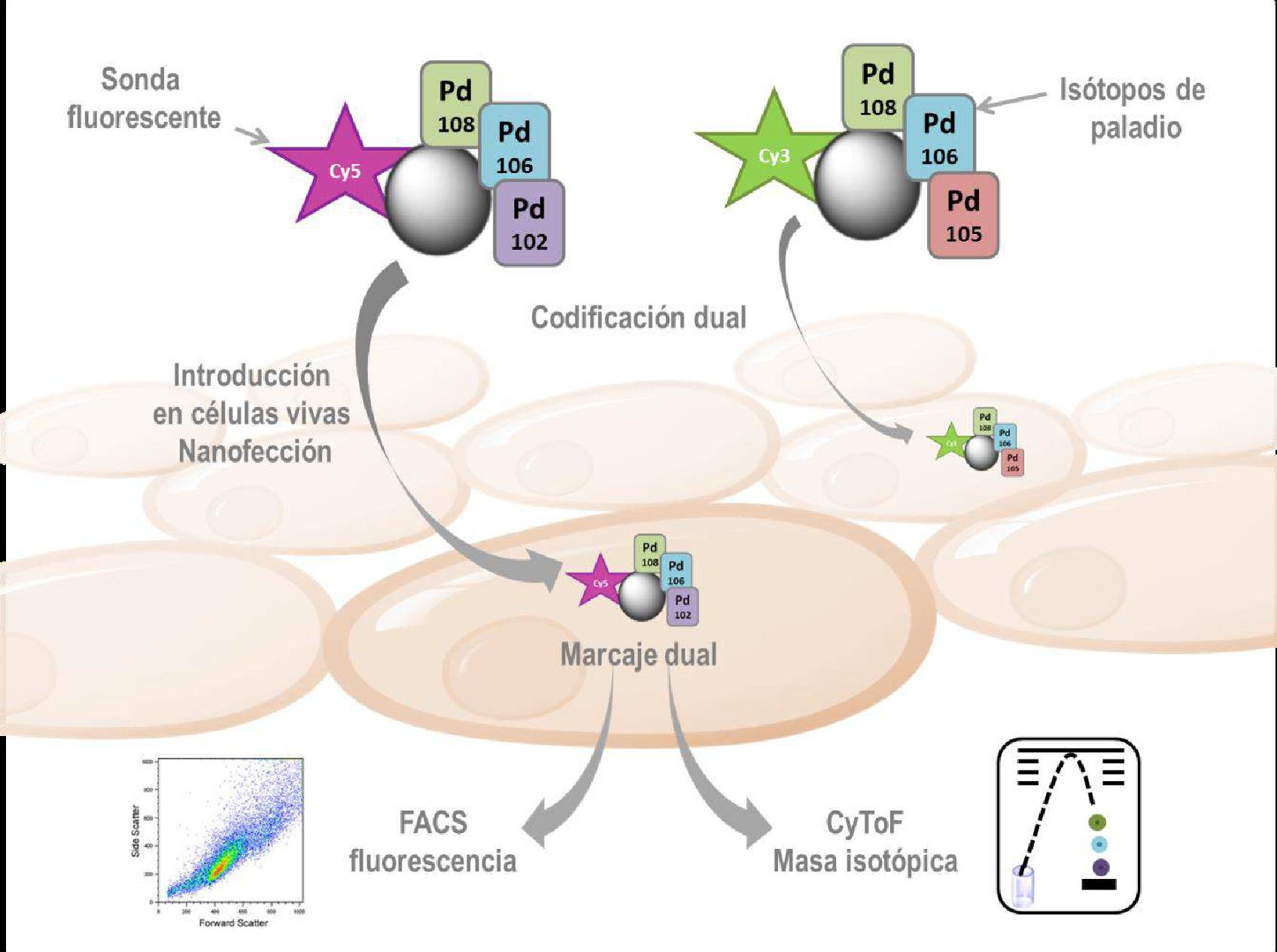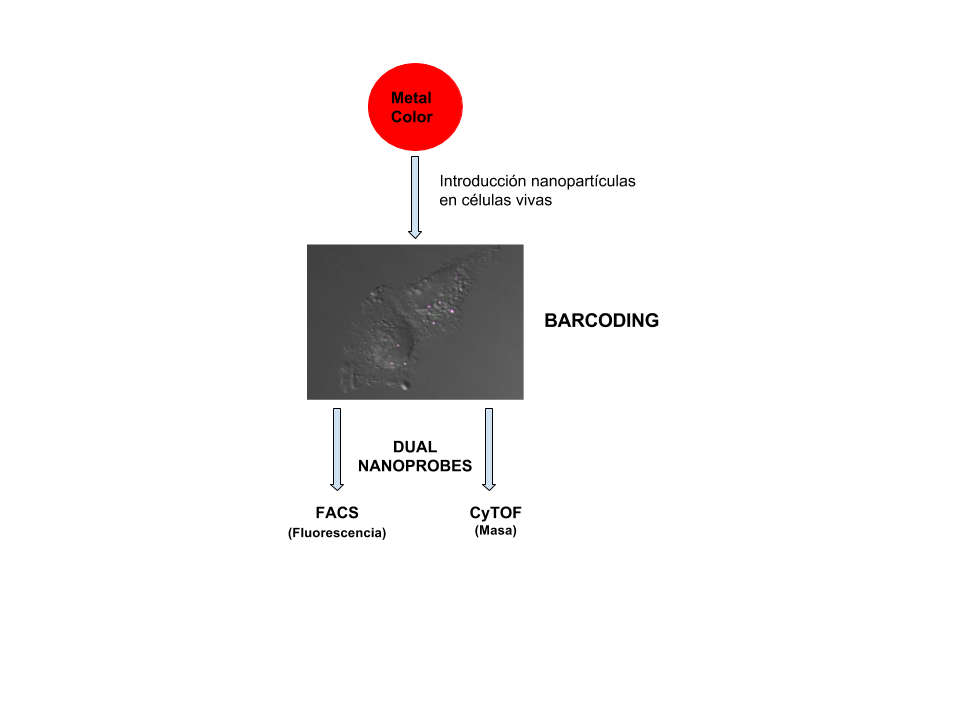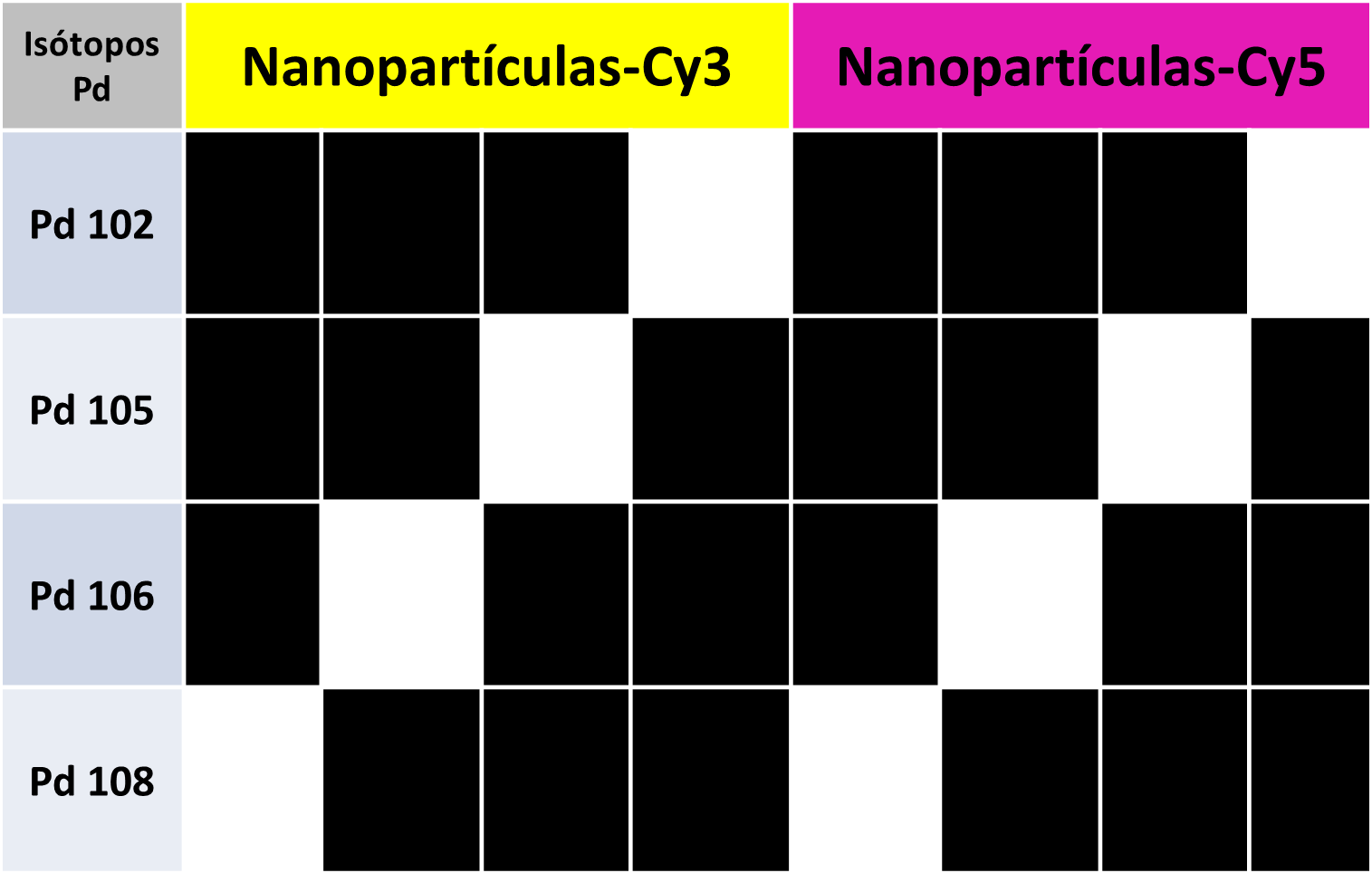Dual Probes for Flow Cytometry and Mass Cytometry
The invention depicts the next aspects:
-
DUAL PROBES
The probes comprise nanoparticles both fluorescent and functionalized with metals which are suitable for carrying out both flow cytometry (FACS) and mass cytometry (CyTOF).
The nanoparticles are functionalized with a fluoride fluorophore so they are converted into fluorescent probes, as well as with metallic isotopes (e.g. palladium). The specific combination of a fluoride Fluorophore and isotopes specific metallic isotope confer a dual codificationfeature, allowing its detection through flow cytometry (fluorophore) and mass cytometry (metallic isotope).
These nanoparticles can enter the mammalians cell without a previous permeabilization step, without showing cytotoxic effects. This unique features open the option to , and they are not toxic, so do studies over living cells.

Fig1. Schematic representation of the workflow for developing the metallic-fluorescent probes -
CELL CODIFICATION PROCEDURE
The invention allows the cell codification through barcoding.
The living cells, through a nanofection process (introducing nanoparticles in cells), incorporate the metallic-fluorescent probes inside, which have a unique and predefined combination. Due to that specific combination, which is detected through mass cytometry and flow cytometry, the probes can act as bar codes.
In that way, a simultaneous reading of different cell lines can be made thorough cell co-cultures, since each cell line will have a specific and unique combination of isotopes and fluoride.

Fig2. Schematic representation of the cell coding.
Fig.3 Example of dual codification based on the combination of three isotopes and a fluorescent cell -
SYNTHESIS PROCEDURE
1º. Emulsion and polymerization of a material that comprises a monomer conformed by heterocarbonated chains, a crossing agent, a polymerization initiator and a monomer that comprises at least an amine group or a carboxylic group, preferably amine, in order to obtain a crossed and functionalized nanoparticle.
2º. Conjugation among nanoparticles amine groups resulting from the previous step with the acid groups of the fluorides through solid-phase reactions..
3º. Incorporation of metals through metallic ions chelation with the fluorides.
Advantages and Benefits
-
The nanoparticles can be used for both mass cytometry (CyTOF) and flow cytometry (FACS)
-
It allows to carry out studies in living cells. The nanoparticles enter the cell without a previous permeabilization.
-
The nanoparticles are not toxic, and do not affect the proteome.
-
It is possible to carry out different cell lines co-cultures, multiple assays and subsequent barcoding.
-
It allows the activation of drug precursor through cytoplasmic catalysis of organometallic reactions inside living cells.
-
It is one of the first reagents for mass cytometry.
Seeking...
License agreement and/or collaboration.
Information
Sectors of application: Medicine.
Stage of development: Patent in process.
Priority date: 07/06/2017.
Owner: University of Granada.


 Derwent innovations index
Derwent innovations index
 Histórico de patentes de la UGR
Histórico de patentes de la UGR
